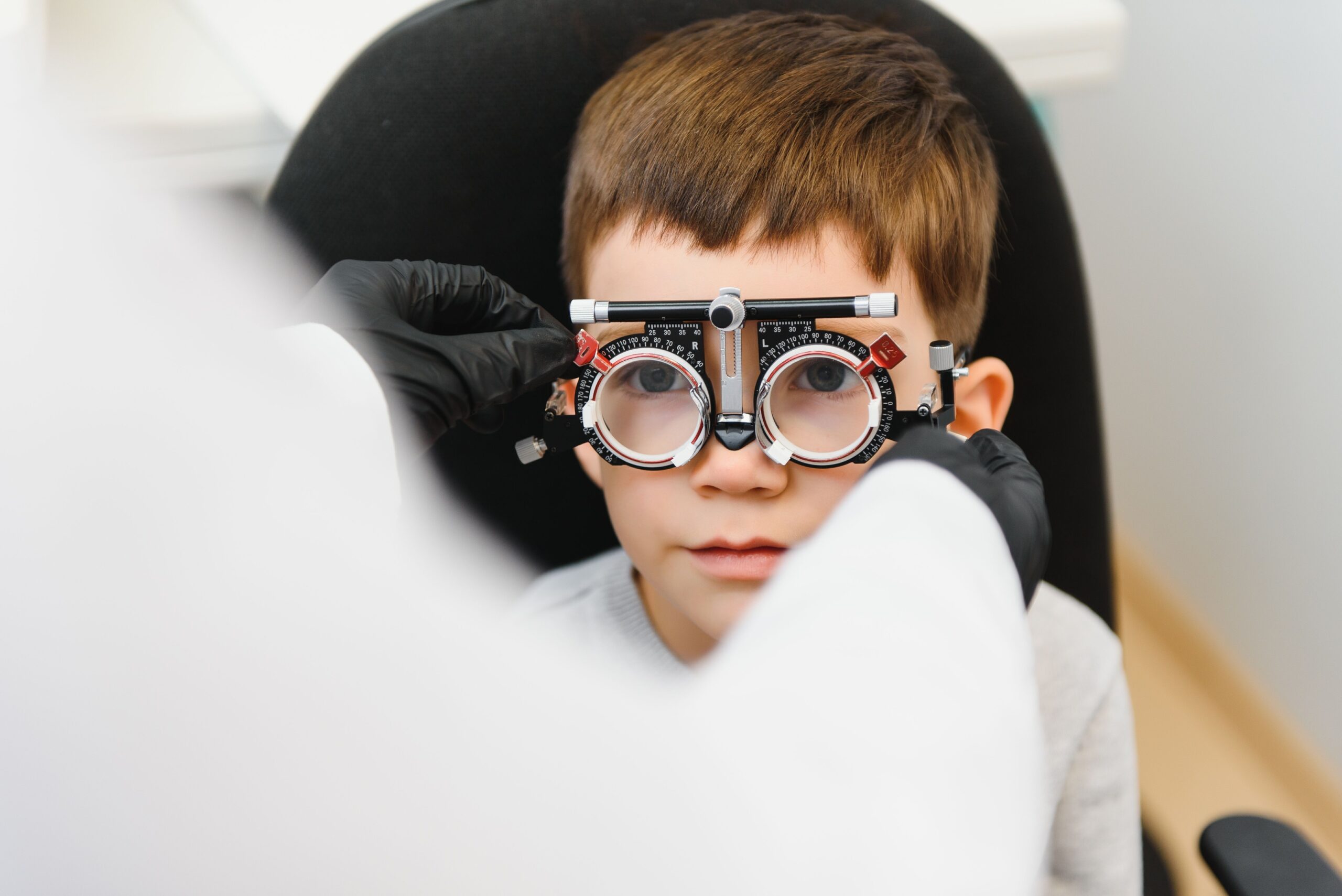The use of rigid gas-permeable contact lenses (RGPCLs) in children undergoing surgery for
Developmental anomalies that lead to an elevated intraocular pressure (IOP) are the cause of PCG, which can lead to
The Contact Lens for Vision Rehabilitation in PCG Children (CLEVR-PCG) study took place at the Zhongshan Ophthalmic Center in Guangzhou, China. Participants were assessed at baseline, 6 months, and 12 months. All participants were children aged between 4 and 15 years, had a postoperative IOP of 21 mmHg or lower on 2 consecutive visits, had at least 1 eye that had PCG, and had a minimum follow-up of 6 months after the most recent surgery. Those who had a nonglaucoma-related corneal pathology, had a corneal clarity of 3 or worse, had known allergies to contact lenses or care solutions, had conditions that did not allow for safe use of RGPCL, or had an inability to cooperate with testing of VA were excluded from the study.
All participants were randomized 1:1 to either RGPCL or spectacles. Children given RGPCL were given optical correction contact lenses that were designed specifically for pediatric patients. Patching therapy was prescribed to any child with amblyopia. Efficacy in visual improvement and safety of RGPCLs acted as the primary outcomes of the study. This was tested in the worse eye based on best-corrected VA (BCVA) at baseline. Changes in contrast sensitivity function (CSF) for the worse eye acted as the secondary outcome.
There were 56 children randomized between April 21, 2022, and August 21, 2023, into the 2 groups: 29 in RGPCL and 27 in spectacles. The mean (SD) age of the children was slightly older in the RGPCL group (7.7 [2.7] vs 7.2 [3.2] years), and the spectacles group had slightly more boys (54.2% vs 58.3%). The RGPCL group also had a slightly worse mean BCVA (0.99 [0.71] vs 1.02 [0.74] logMAR) compared with the spectacles group. Prior to the study, participants had worn spectacles for 4.4 (2.5) years in the RGPCL group and 2.5 (1.9) years in the spectacles group.
Worse-eye BCVA was improved in the RGPCL group compared with the spectacles group after 1 year (mean improvement, 0.31 [0.28] vs 0.12 [0.33] logMAR). BCVA was 0.16 (0.17) in the RGPCL group compared with 0.38 (0.37) in the spectacles group after 1 year in the better-seeing eyes. The worse-seeing eyes had a BCVA of 0.69 (0.65) in the RGPCL group compared with 0.90 (0.78) in the spectacles group. A total of 62.5% of the RGPCL group had an improvement of 2 or more lines in the BCVA of the worse eye compared with 37.5% of the spectacles group.
Glaucoma indicators, refractive development, and anterior segment parameters were not different between the 2 groups. There were 2 participants who discontinued use of RGPCL due to lens handling difficulties and foreign body sensations, with no serious adverse effects reported.
There were some limitations to this study. Masking the 2 groups was challenging due to the visible difference between groups; this could have introduced measurement bias. Generalizability could be limited due to the strict inclusion criteria and due to all participants coming from a single center. Distance and everyday visual performance were not addressed due to evaluating only near distance vision. Long-term effects of refractive development, filtering bleb outcomes, and IOP stability could not be assessed due to the shorter follow-up time.
“The CLEVR-PCG randomized clinical trial demonstrates that RGPCLs significantly enhanced vision rehabilitation in children after PCG surgery compared with spectacles,” the authors concluded. “These results support RGPCLs as an alternative for children with poor spectacle response.”
References
1. Jiang J, Hu Y, Zhu Y, et al. Visual outcomes of children with primary congenital glaucoma receiving different refractive corrections: the CLEVR-PCG randomized clinical trial. JAMA Ophthalmol. Published online November 6, 2025. doi:10.1001/jamaophthalmol.2025.3976
2. Congenital glaucoma. Cleveland Clinic. Updated October 8, 2024. Accessed November 12, 2025.
